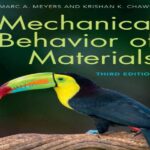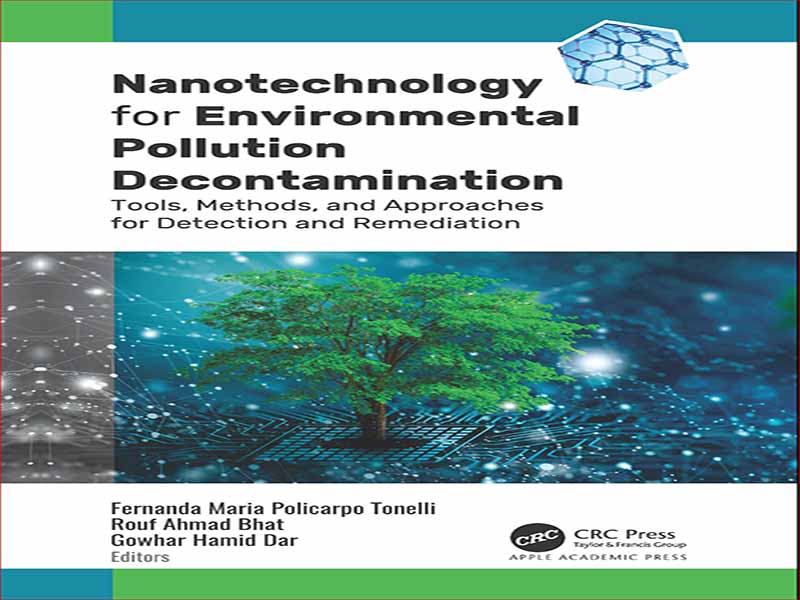- عنوان کتاب: NANOTECHNOLOGY FOR ENVIRONMENTAL POLLUTION DECONTAMINATION
- نویسنده: Fernanda Maria Policarpo Tonelli
- حوزه: زفع آلودگی
- سال انتشار: 2023
- تعداد صفحه: 560
- زبان اصلی: انگلیسی
- نوع فایل: pdf
- حجم فایل: 25.4 مگابایت
ابزارهای ذخیره انرژی الکتروشیمیایی مورد توجه محققان و دانشجویان است. این کتاب مقدمه ای جامع در مورد نانومواد و کاربردهای بالقوه آنها به طور خاص برای دستگاه های الکتروشیمیایی (باتری های قابل شارژ، ابرخازن ها و غیره) به شیوه ای منسجم و ساده ارائه می دهد. این مقاله مفاهیم اساسی نانومواد، روشهای شیمیایی و فیزیکی سنتز، خواص، روشهای شناسایی و کاربردهای مرتبط را پوشش میدهد. ویژگی ها: • تکامل نانوذرات را در دستگاه های ذخیره انرژی الکتروشیمیایی معرفی می کند. • اطلاعات دقیق در مورد سنتز گام به گام نانوذرات را ارائه می دهد. • روش های مختلف توصیف (ساختاری، الکتریکی، نوری و حرارتی) را مورد بحث قرار می دهد. • شامل استفاده از نانوذرات در دستگاه های مختلف الکتروشیمیایی است. • با هدف پر کردن شکاف بین سنتز مواد و کاربرد واقعی. هدف این کتاب دانشجویان ارشد در مقاطع کارشناسی / کارشناسی ارشد در شیمی مواد، الکتروشیمی و مهندسی شیمی و ذخیره انرژی است.
Nanomaterials describe, in principle, materials in which a single unit is sized (in at least one dimension) between 1 and 1000 nm (10–9 m) but is usually 1–100 nm. Nanomaterials research takes a materials science-based approach to nanotechnology, leveraging advances in materials metrology and synthesis which have been developed in support of microfabrication research. Materials with structure at the nanoscale often have unique optical, electronic or mechanical properties.
Biological systems often feature natural, functional nanomaterials. The structure of foraminifera (mainly chalk) and viruses (protein, capsid), the wax crystals covering a lotus or nasturtium leaf, spider and spider-mite silk, the blue hue of tarantulas, the “spatulae” on the bottom of gecko feet, some butterfly wing scales, natural colloids (milk, blood), horny materials (skin, claws, beaks, feathers, horns, hair), paper, cotton, nacre, corals and even our bone matrix are all natural organic nanomaterials. Natural inorganic nanomaterials occur through crystal growth in the diverse chemical conditions of the Earth’s crust. For example, clays display complex nanostructures due to the anisotropy of their underlying crystal structure and volcanic activity can give rise to opals, which are an instance of naturally occurring photonic crystals due to their nanoscale structure. Fires represent particularly complex reactions and can produce pigments, cement, fumed silica, etc.
Inorganic nanomaterials, (e.g. quantum dots, nanowires and nanorods) because of their interesting optical and electrical properties, could be used in optoelectronics. Furthermore, the optical and electronic properties of nanomaterials which depend on their size and shape can be tuned via synthetic techniques. There are possibilities to use those materials in organic material-based optoelectronic devices such as organic solar cells, OLEDs, etc. The operating principles of such devices are governed by photoinduced processes like electron transfer and energy transfer. The performance of the devices depends on the efficiency of the photoinduced process responsible for their functioning. Therefore, a better understanding of those photoinduced processes in organic/inorganic nanomaterial composite systems is necessary in order to use them in organic optoelectronic devices.
این کتاب را میتوانید از لینک زیر بصورت رایگان دانلود کنید:
Download: NANOTECHNOLOGY FOR ENVIRONMENTAL POLLUTION DECONTAMINATION





































نظرات کاربران